So I am trying to do some calculations for a UV curing system that the place I am interning for is working on. One of the tasks that I am assigned to is to determine how many LED does the system need given the energy needed to cure 1 cm square of UV ink. So I have done some research on my own and find some formulae online but I am still not quite sure which unit I should depend on to determine the amount of LED that the system need. So far I have found a formula that gives me W/m2 and one that uses Lm (Lumen). Thanks in advance guys.
-
1So, what is your question? What power supply do you have? What devices have you considered (with proper data sheets)? What specific UV characteristics? – Andy aka Jul 13 '17 at 07:36
-
Where did you find the formulas? What is it being powered with? What LEDs are you using? – MCG Jul 13 '17 at 07:37
-
You should search for the UV power emited by one UV LED and for the energy needed to cure on square centimeter of the ink. You should decide how long a full curing should take. The shorter the curing time, the more LEDs you need. But don't forget adequate cooling of the LEDs. Be sure that the wavelength needed for curing is emitted by the LEDs. – Uwe Jul 13 '17 at 10:05
-
You'll need to know about something called a solid angle, and do some research into optics and photometrey – Voltage Spike Jul 14 '17 at 16:06
4 Answers
Luminous flux (lm) is not what we want- it incorporates the sensitivity of the human eye.
For UV curing we need irradiance in W/m^2 and an exposure time to get a total integrated energy that is sufficient. We also need to consider the peak wavelength of the UV LED and the sensitivity of the material you are polymerizing to that particular part of the spectrum. Different materials are more or less suitable for a given wavelength, and LED light sources that provide shorter wavelengths tend to be more expensive and perhaps shorter life.
You can always increase the exposure time to increase the total dose, but be careful about trusting the claimed output power of 'no name' light sources, and be careful about running them at the full rated current. It would be best to derate the latter by at least 30% and to keep them cool via a heatsink and fan or closed-loop liquid cooling).
It may also be somewhat difficult to estimate the actual exposure with an adhesive or thick material (or if the material is partly blocked by something like glass which absorbs some of the UV) vs. a simple overcoat or UV ink cure, so you may have to experiment.
- 376,485
- 21
- 320
- 842
You want to cure 1 square centimeter of ink. Look in the ink datasheet to find what UV light intensity is required for curing. That should be in units of power per area, like W/m2. You know the area, so you know can calculate the power required for the area you have (1 cm2).
Next you look at what wavelength the ink needs and see if you can even find LEDs that emit within the suitable wavelength range. If you do find some, then you look at their datasheet to see how much power they can put out. Use the output power and the radiation pattern to determine the power one LED can dump onto your area from the distance you can arrange. From that you know how many LEDs it takes to dump the necessary power.
Always derate a bit. For example, if you find that one LED provides exactly 1/5 the power you need, don't use just 5 LEDs. Add a few extra so that the system still works when the inevitable stuff happens.
- 310,974
- 36
- 428
- 915
I would use the formula for lm, because LEDs have different luminous efficacies, i.e. the lumen output per watt depends on the LED you use.
To do this, you need to know the characteristics of the LED you are using. In the picture below, obtained here, you can see the lumens as a function of current.
As an example, assume that you select a drive current of 1A for the LED. This will generate 400 lm per LED. If you need 20000 lm in total, you will need 50 LEDs.
- 1,053
- 6
- 13
Find the led (uv) luminosity, area to be exposed, and intensity of the exposure. That gives you the number of less needed.
- 4,272
- 1
- 7
- 9
-
Finding those numbers doesn't give the number of LEDs required. Performing calculations with them might but you haven't shown this. Your predictive text has made a mess of your answer again. "LED" and "UV" are acronyms and should be capitalised. – Transistor Jul 13 '17 at 12:33
